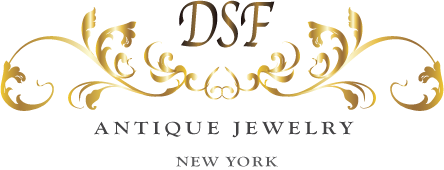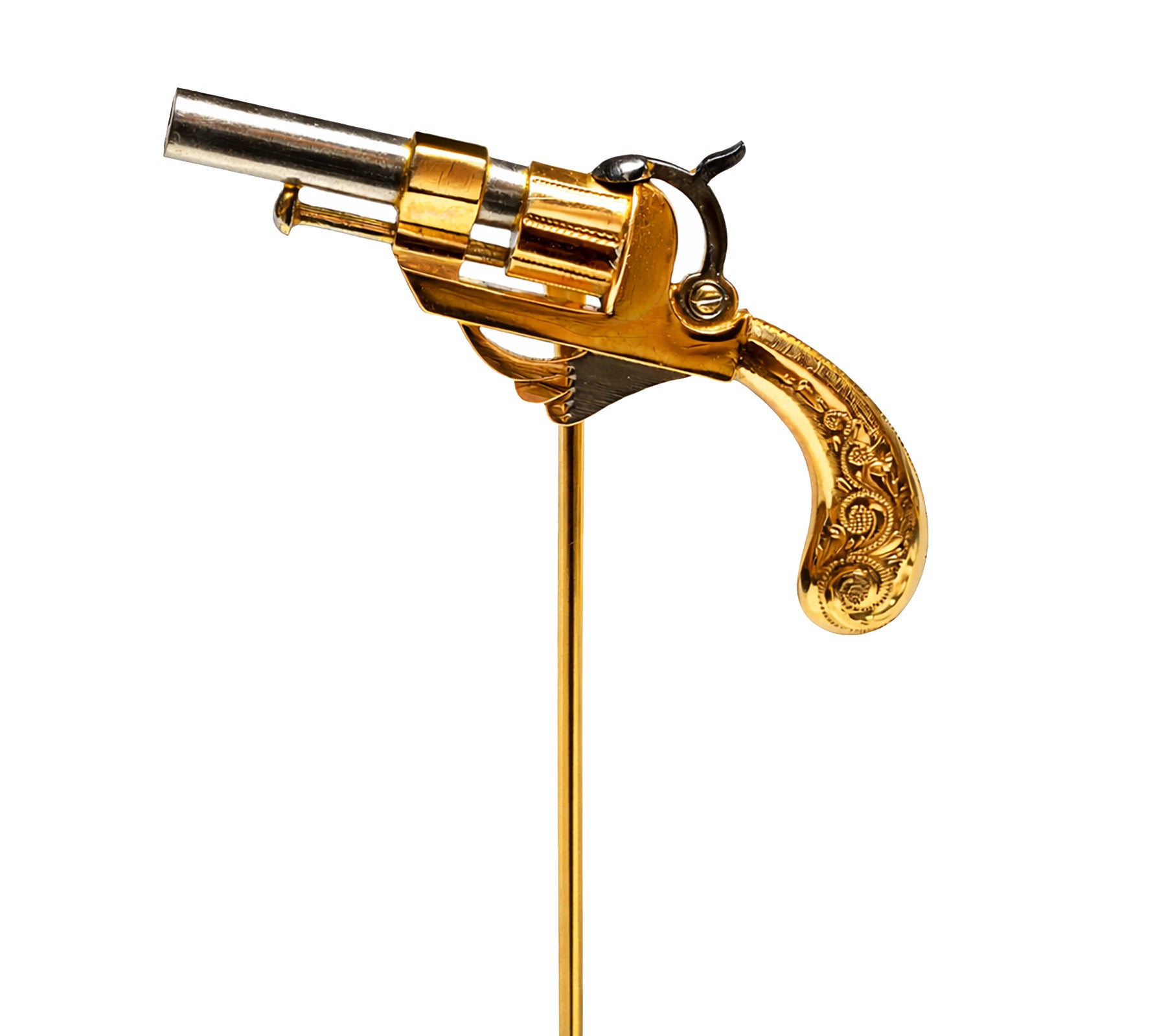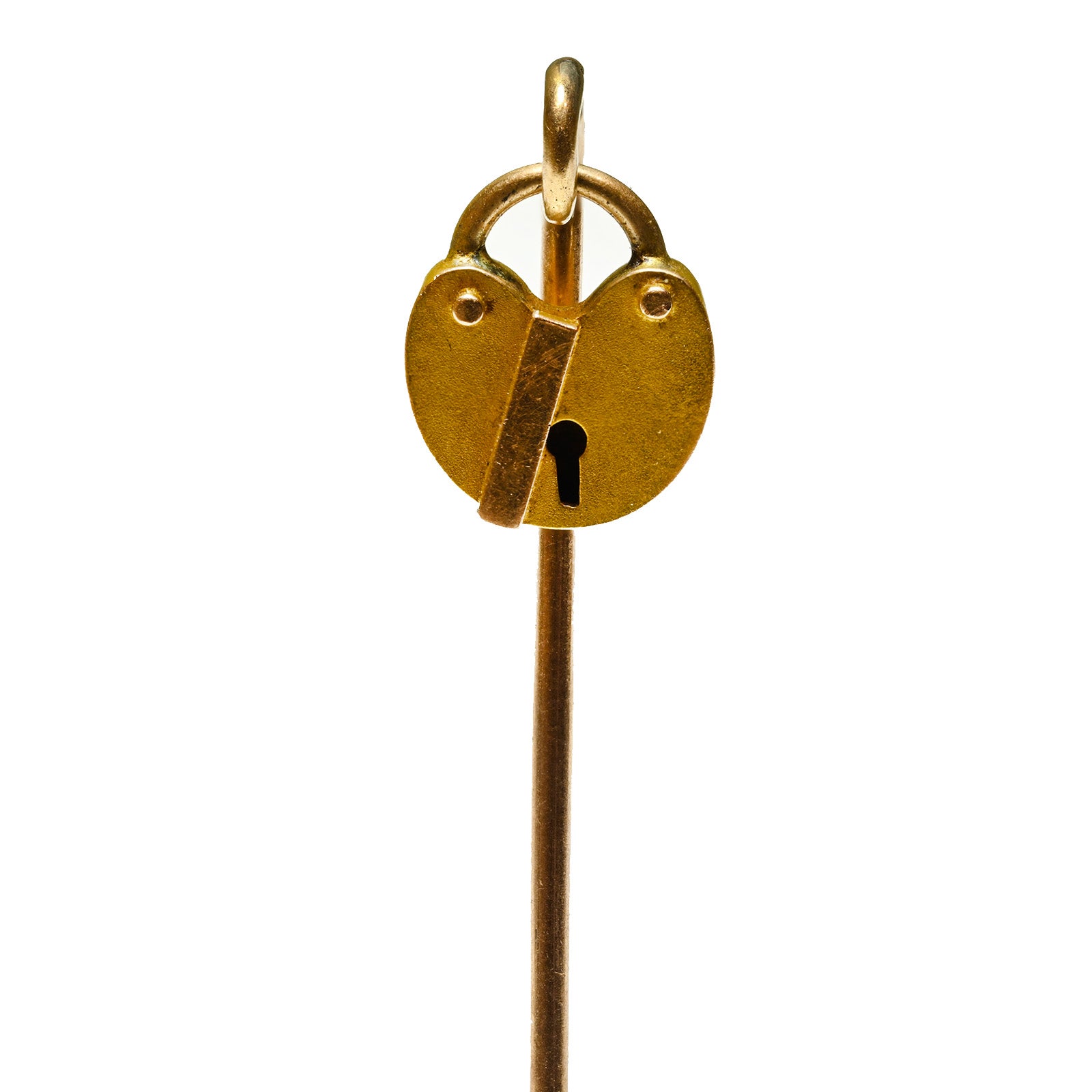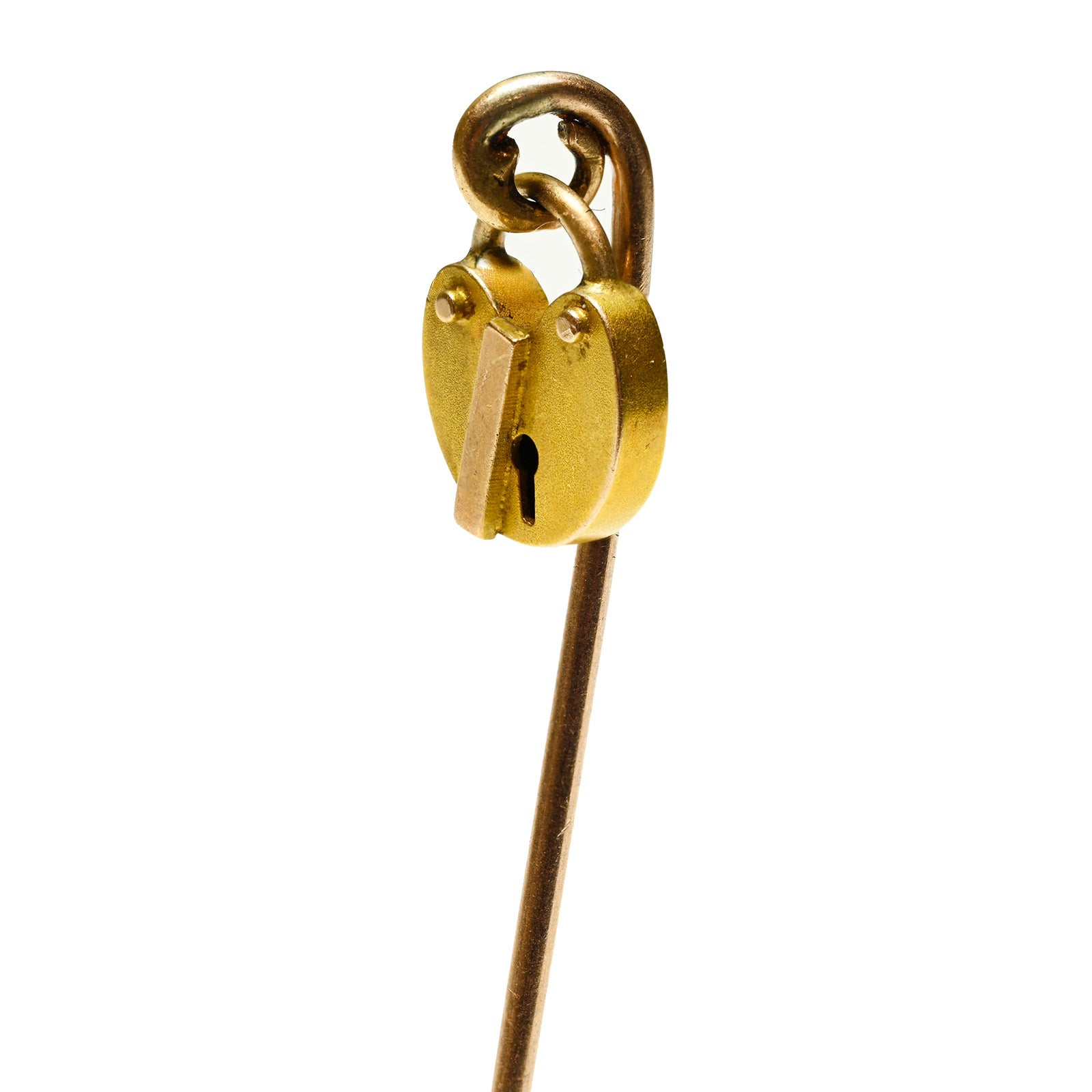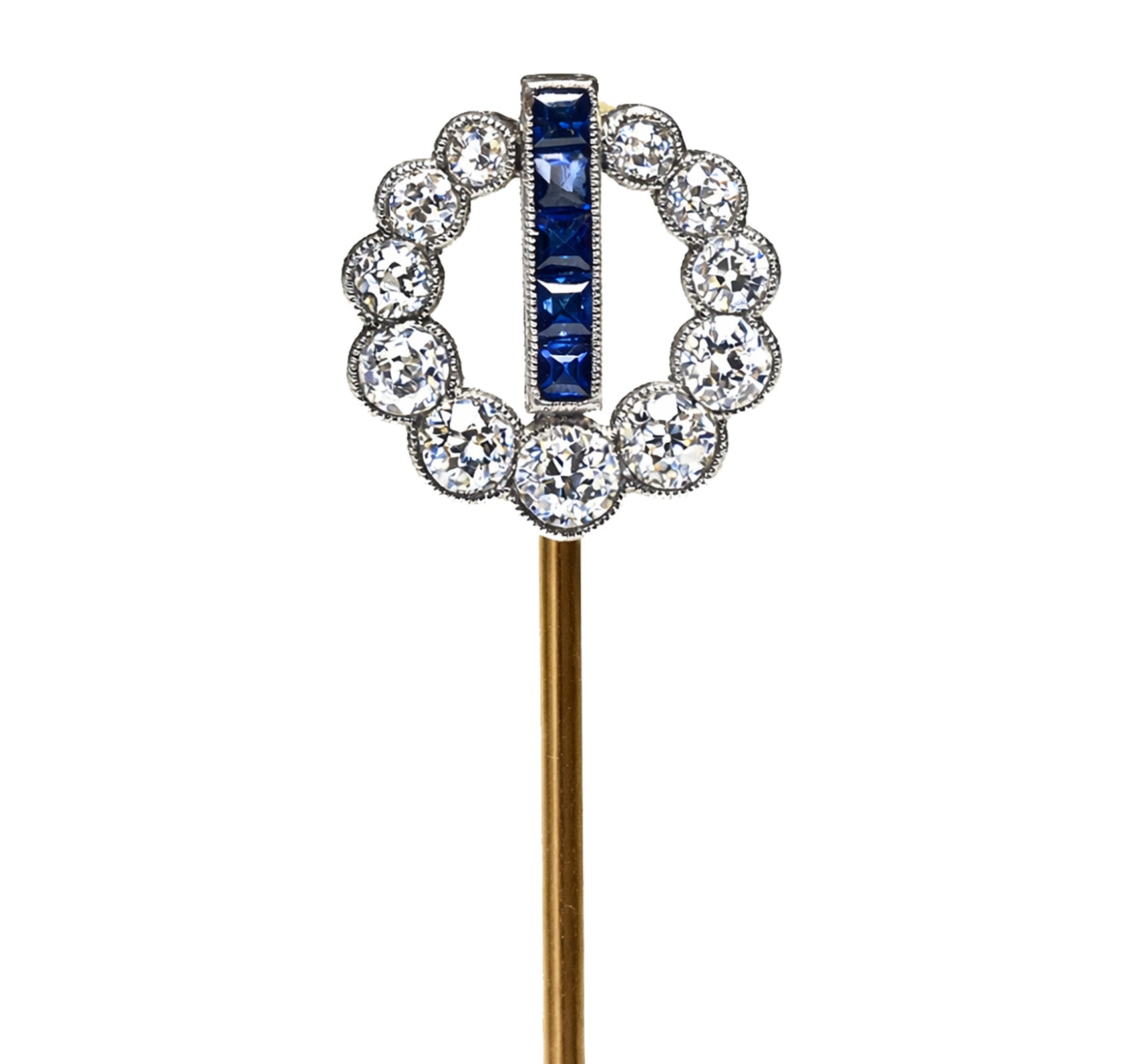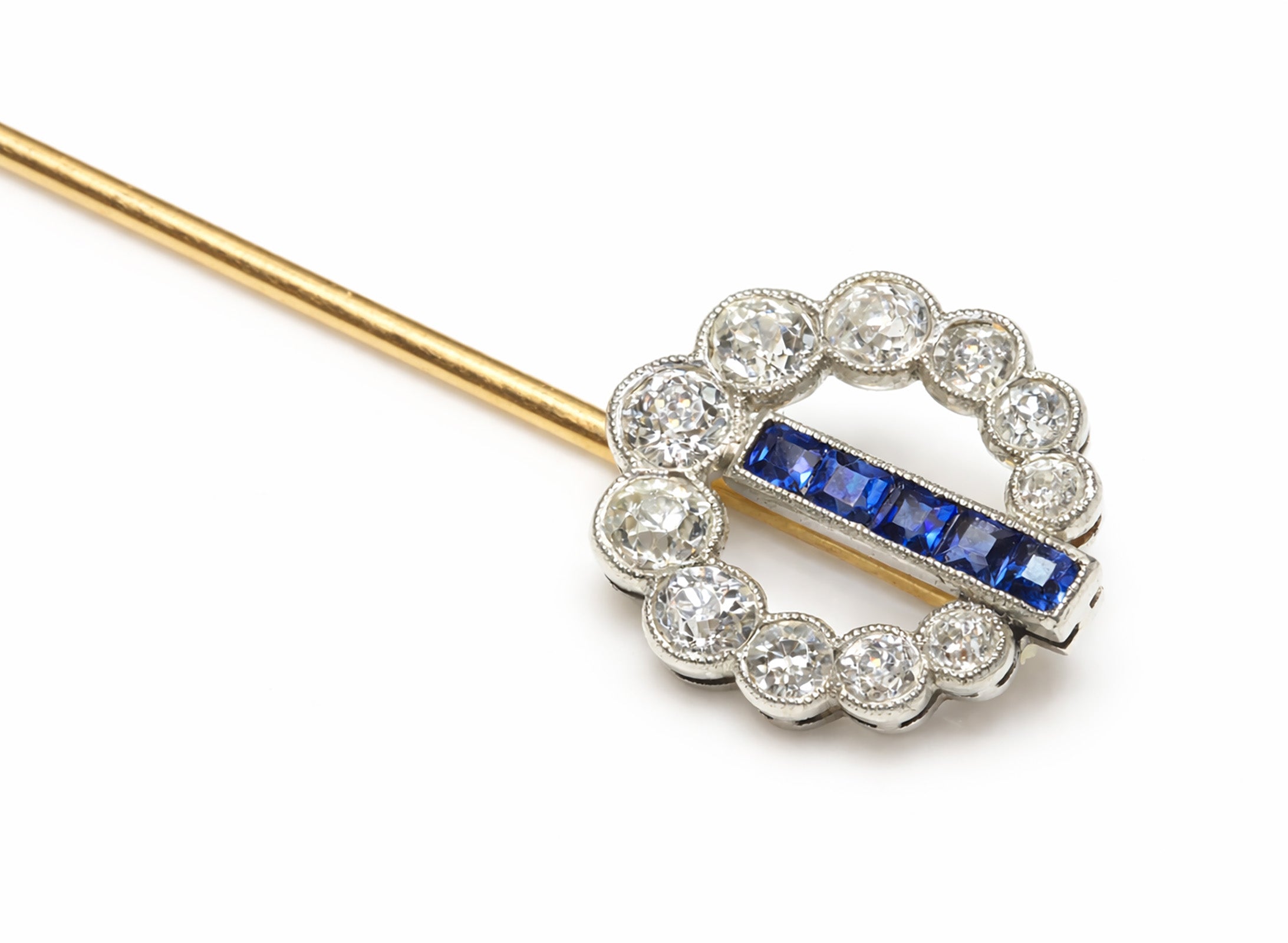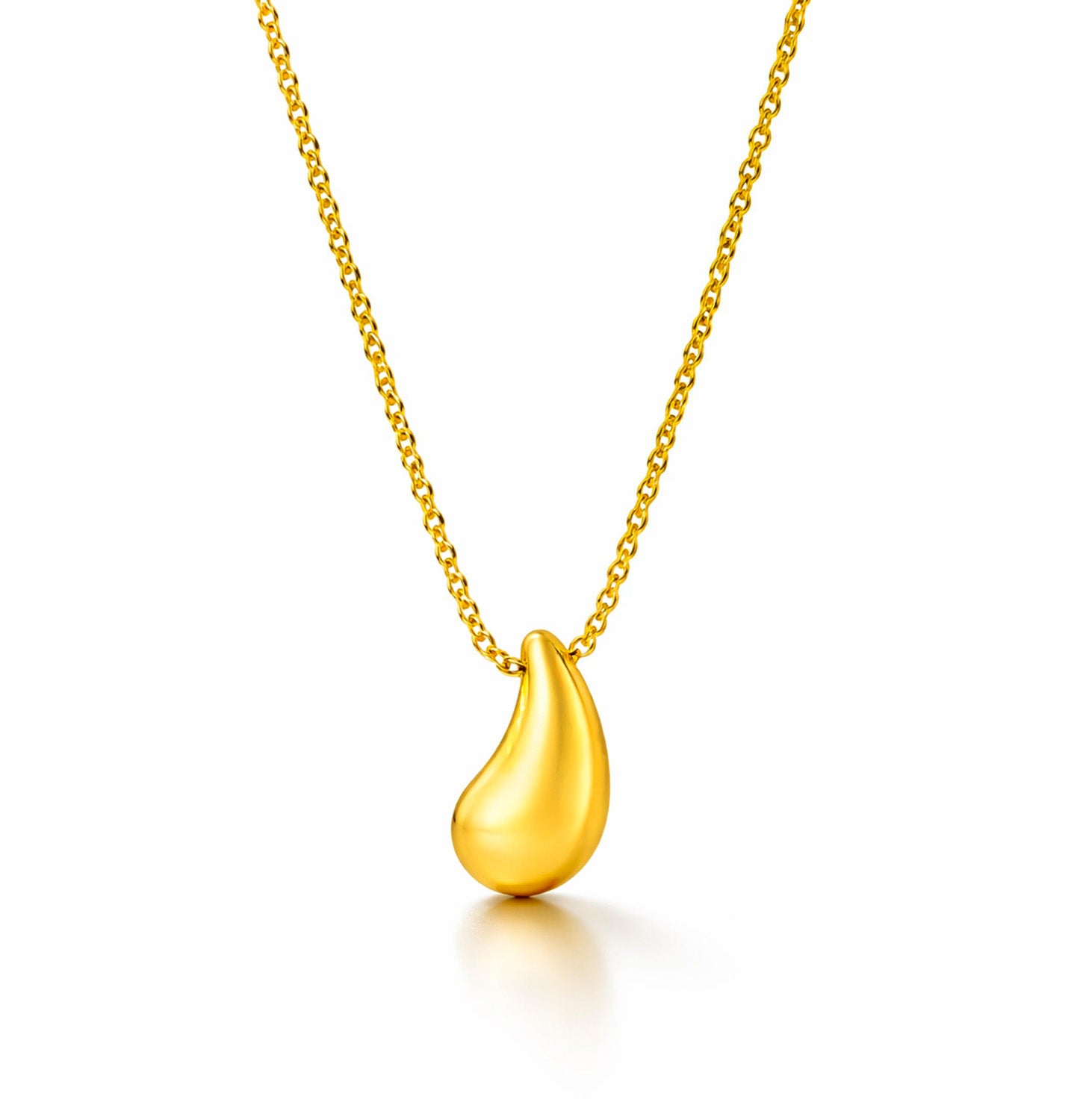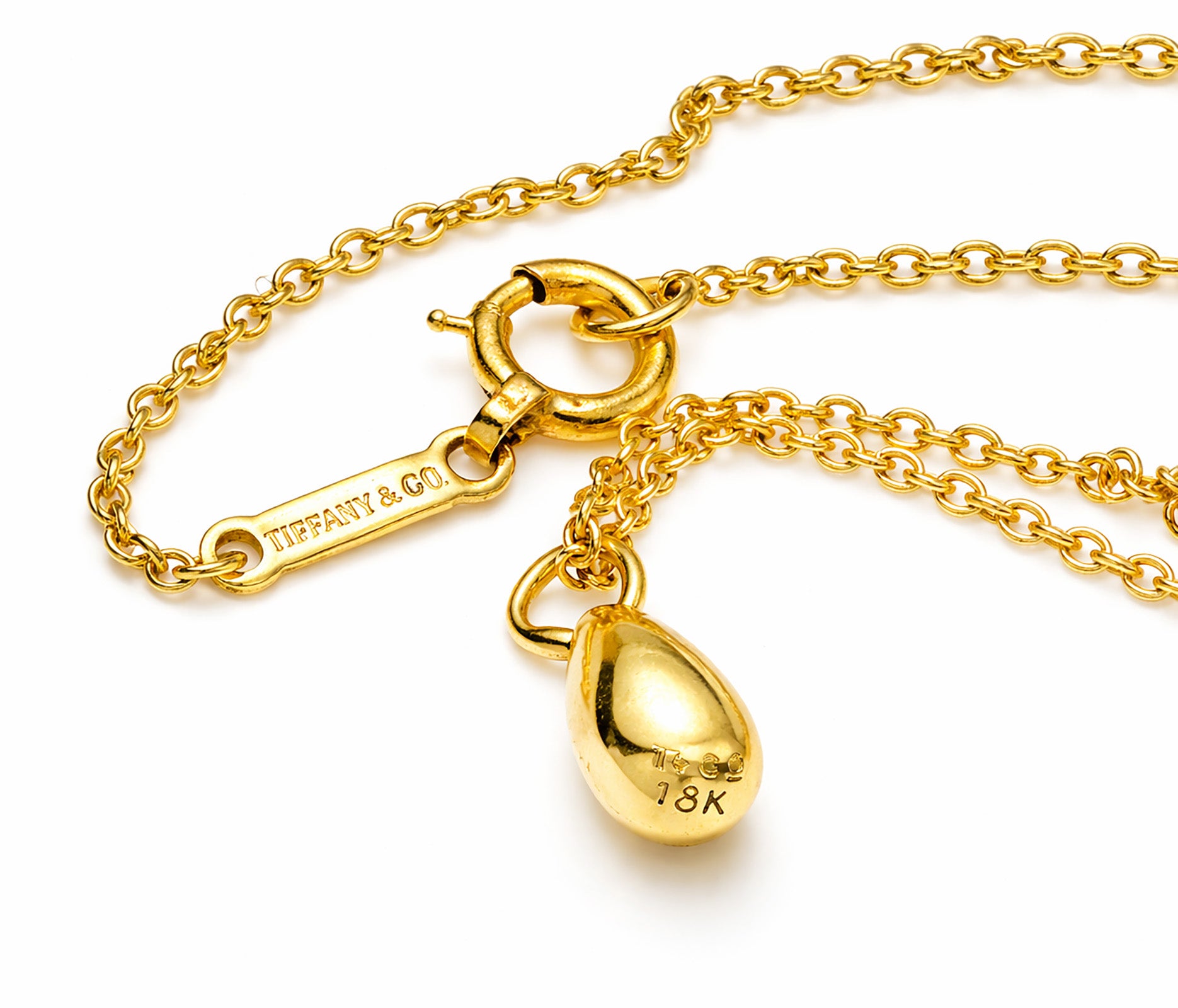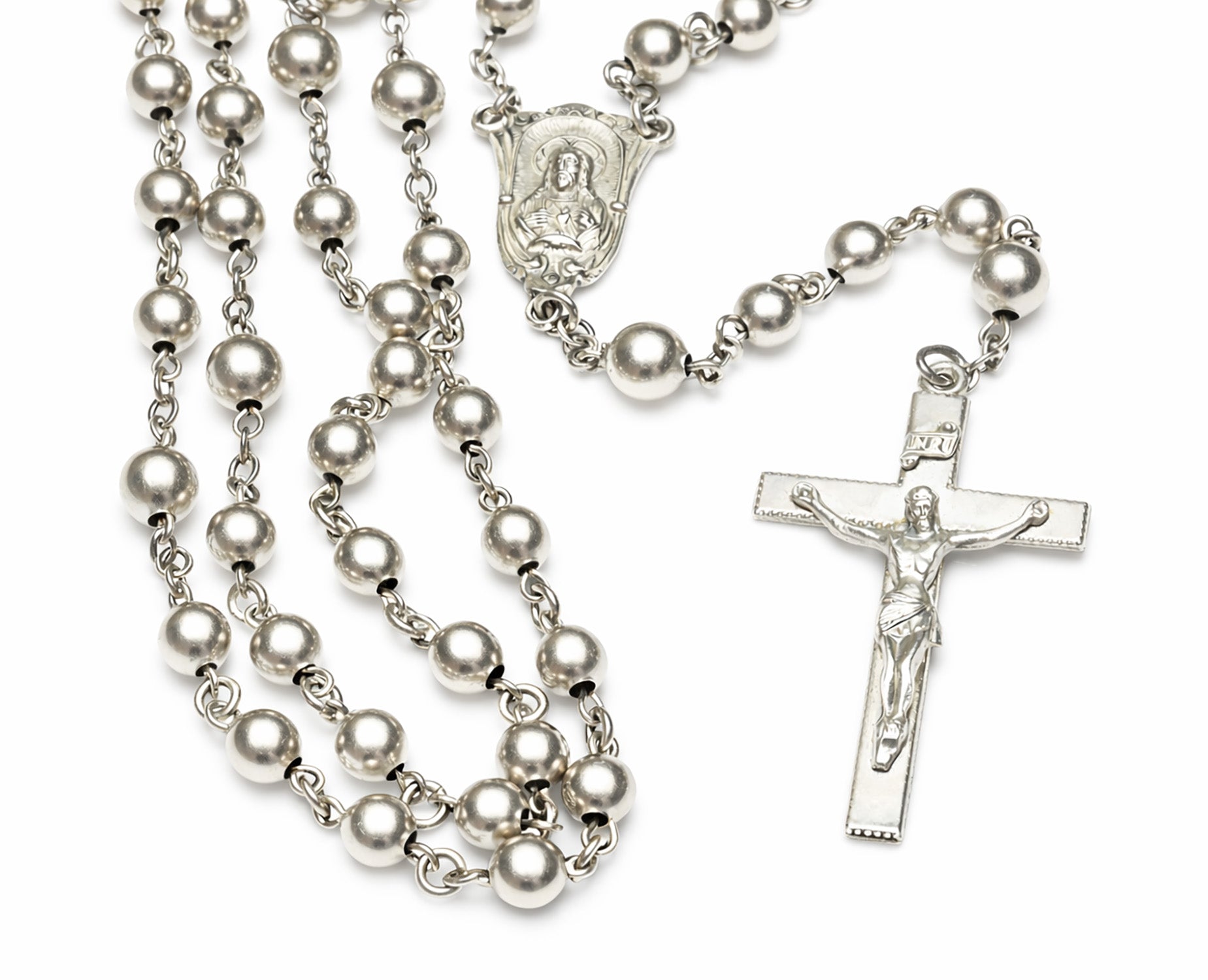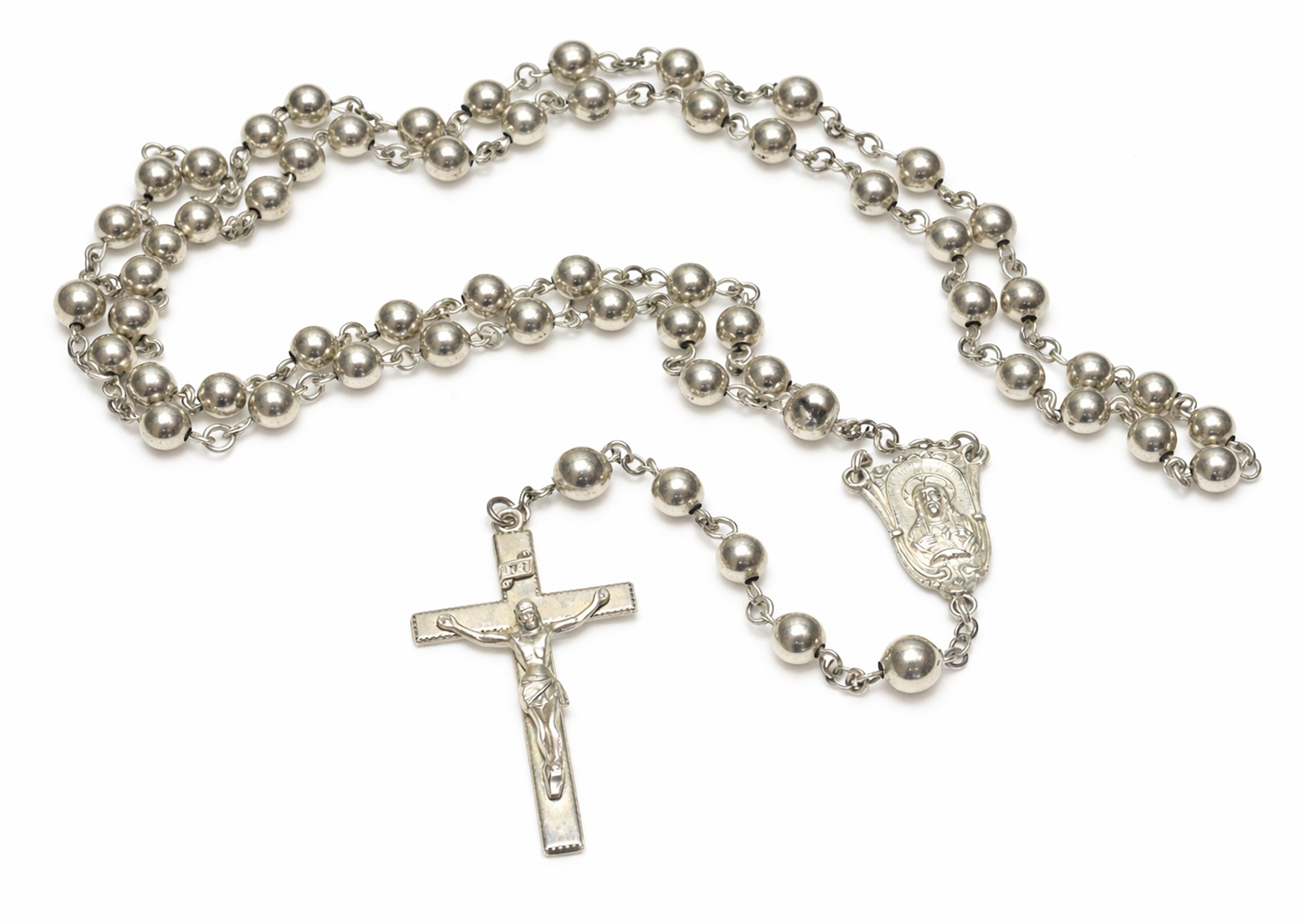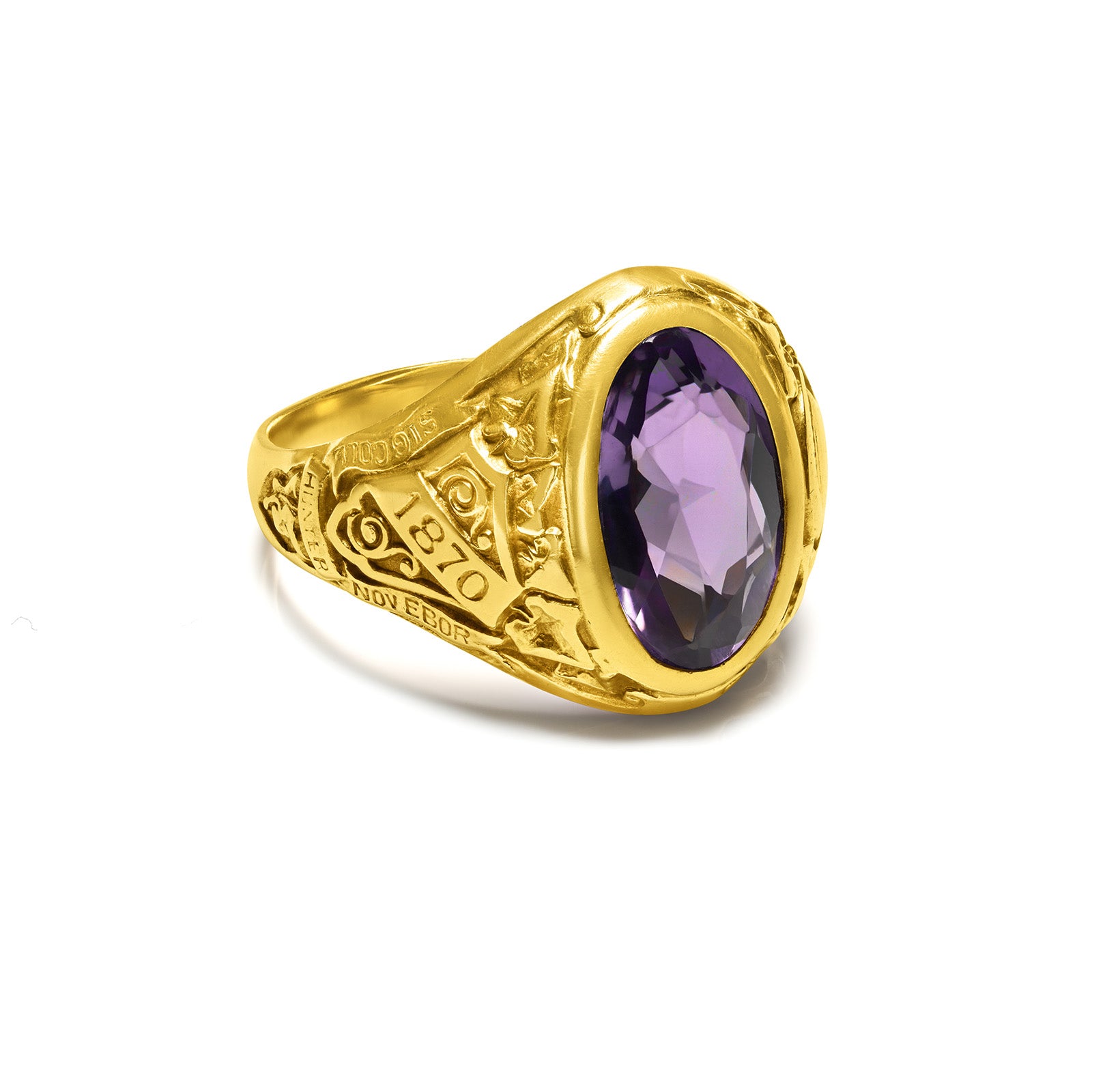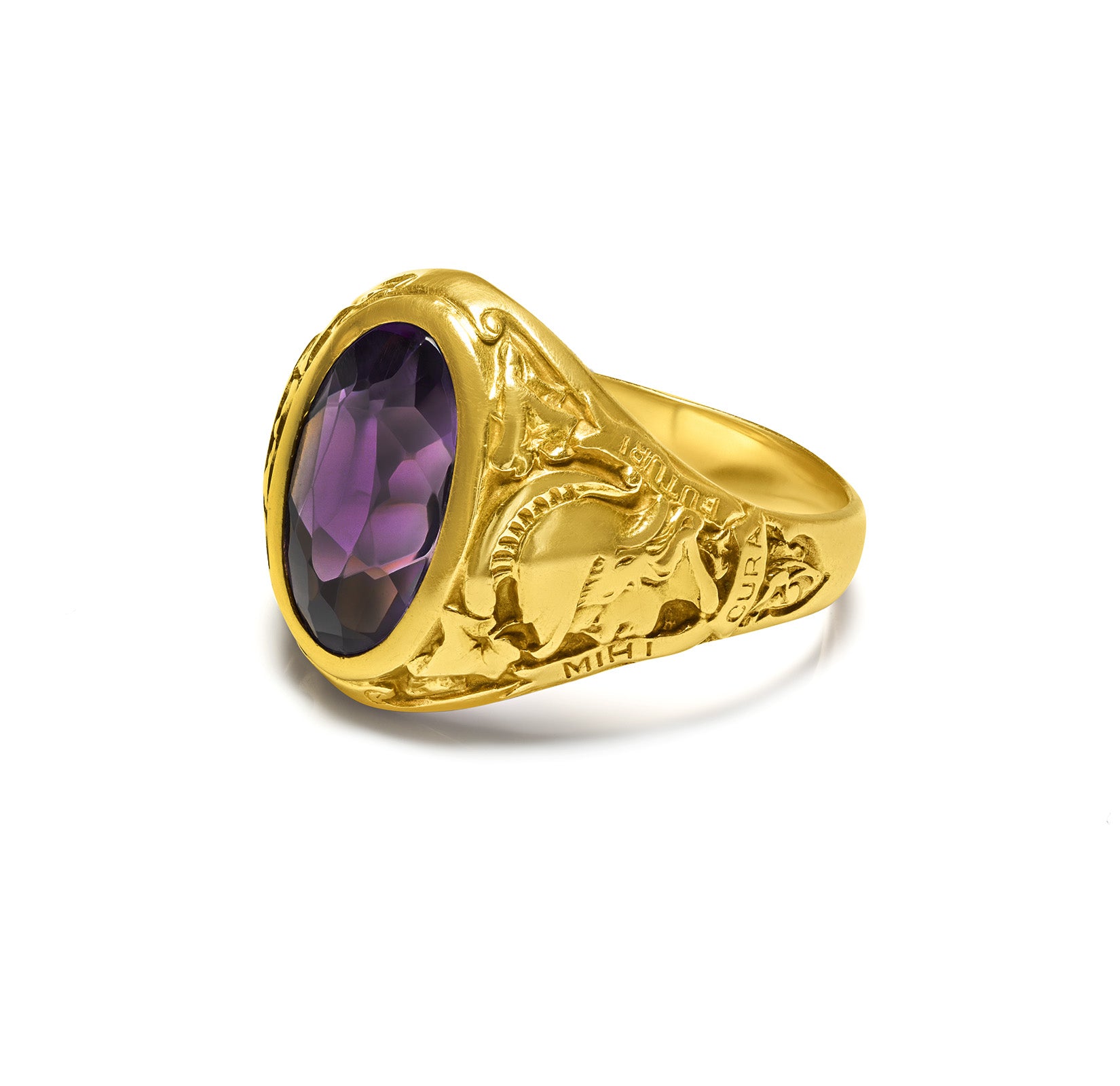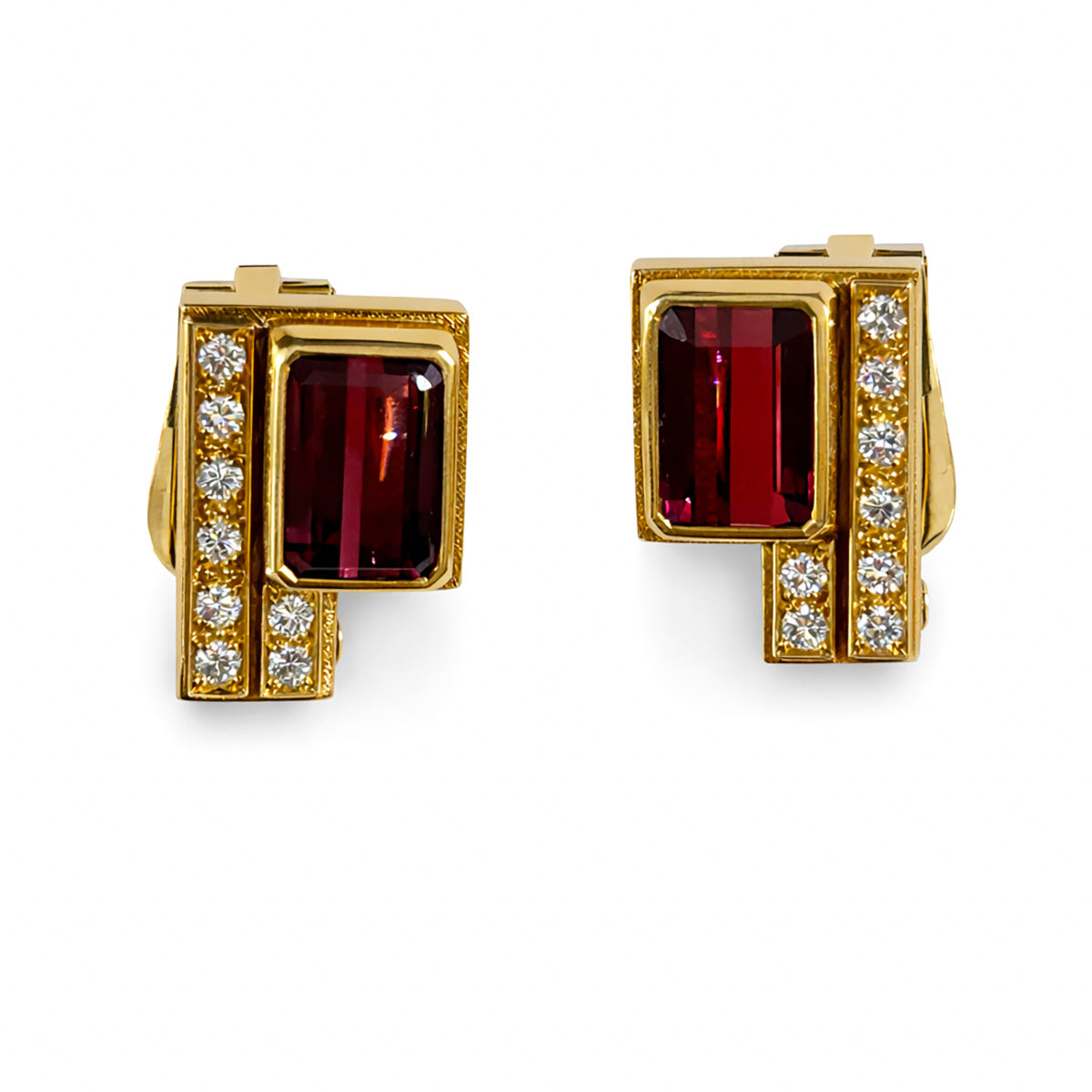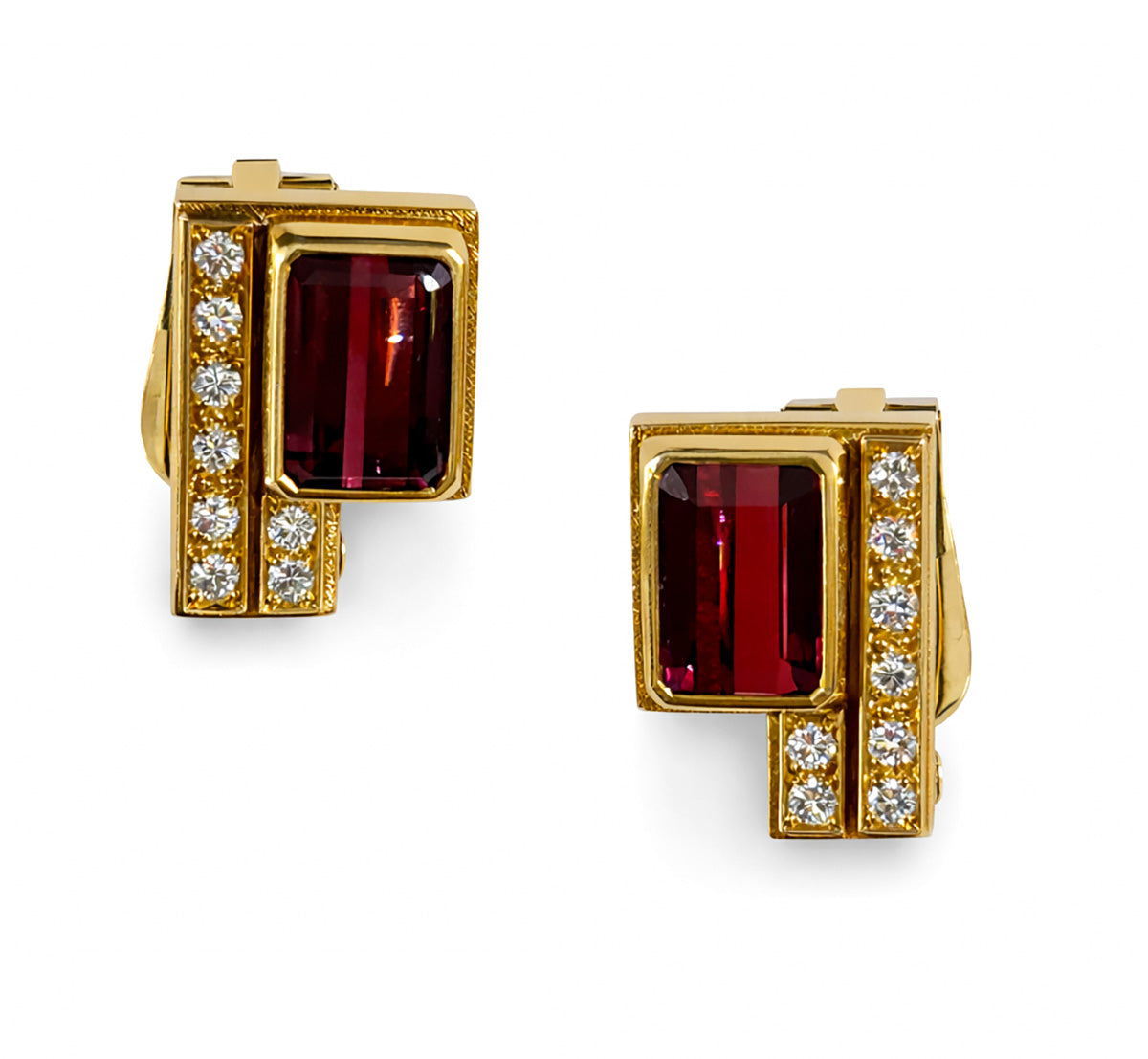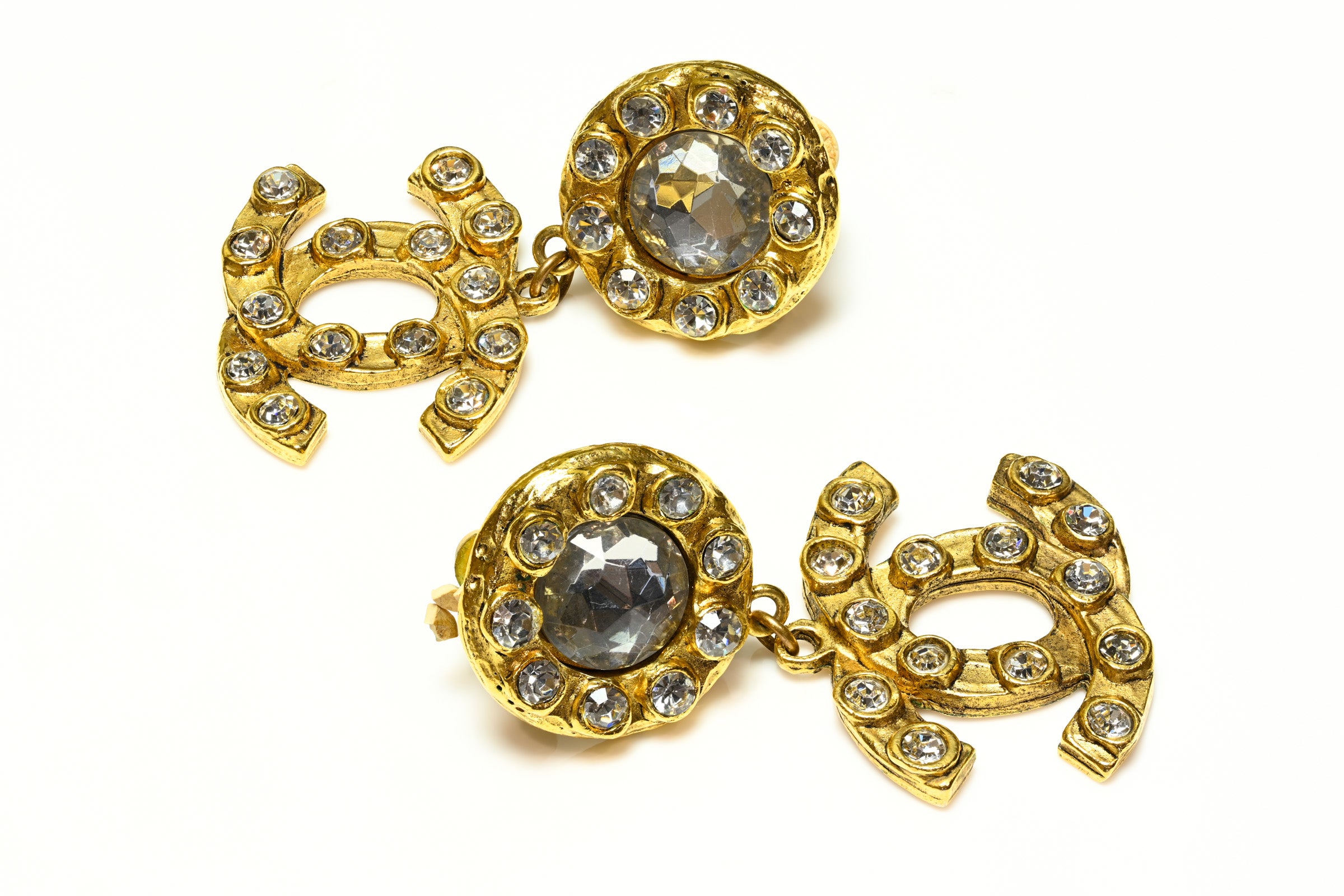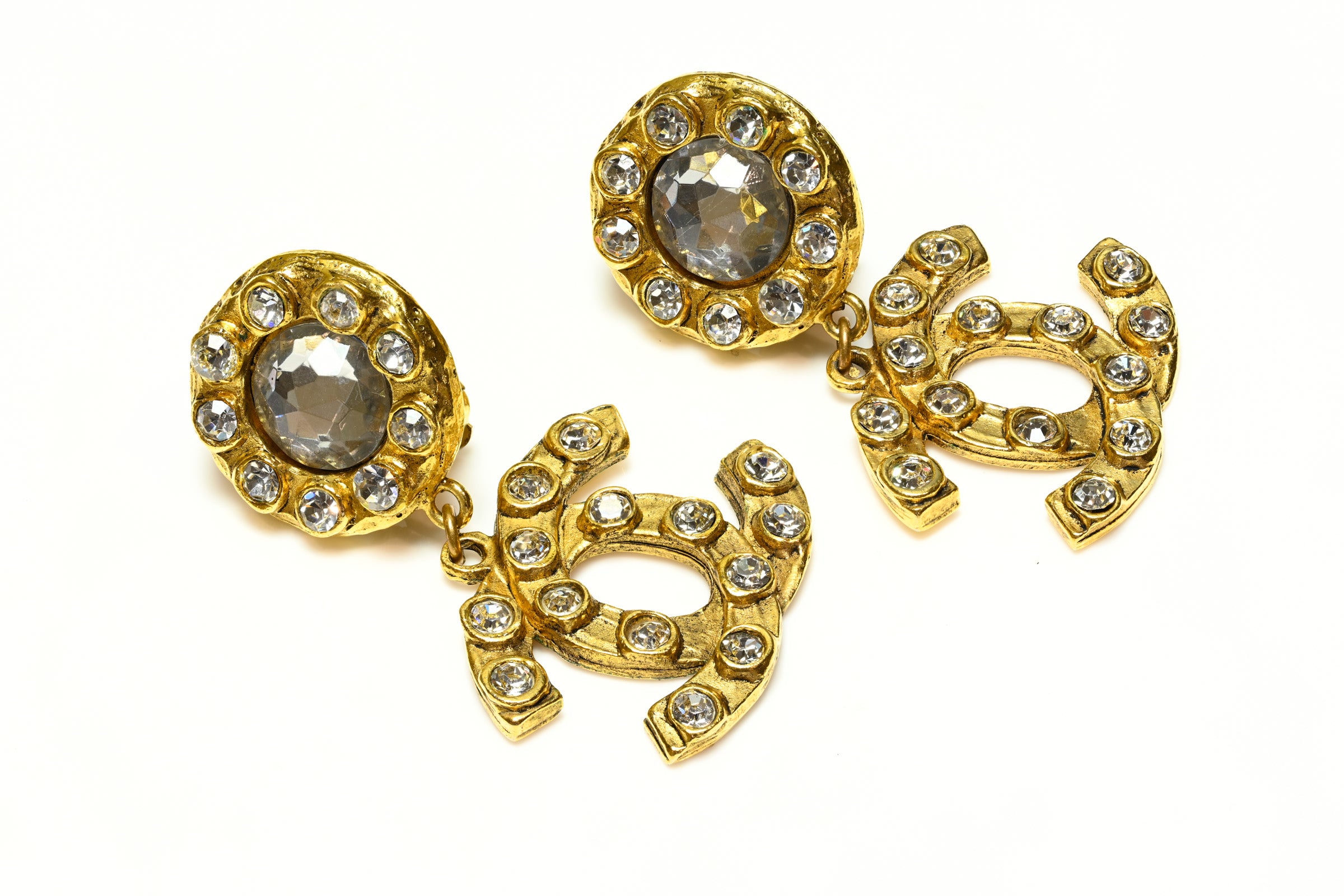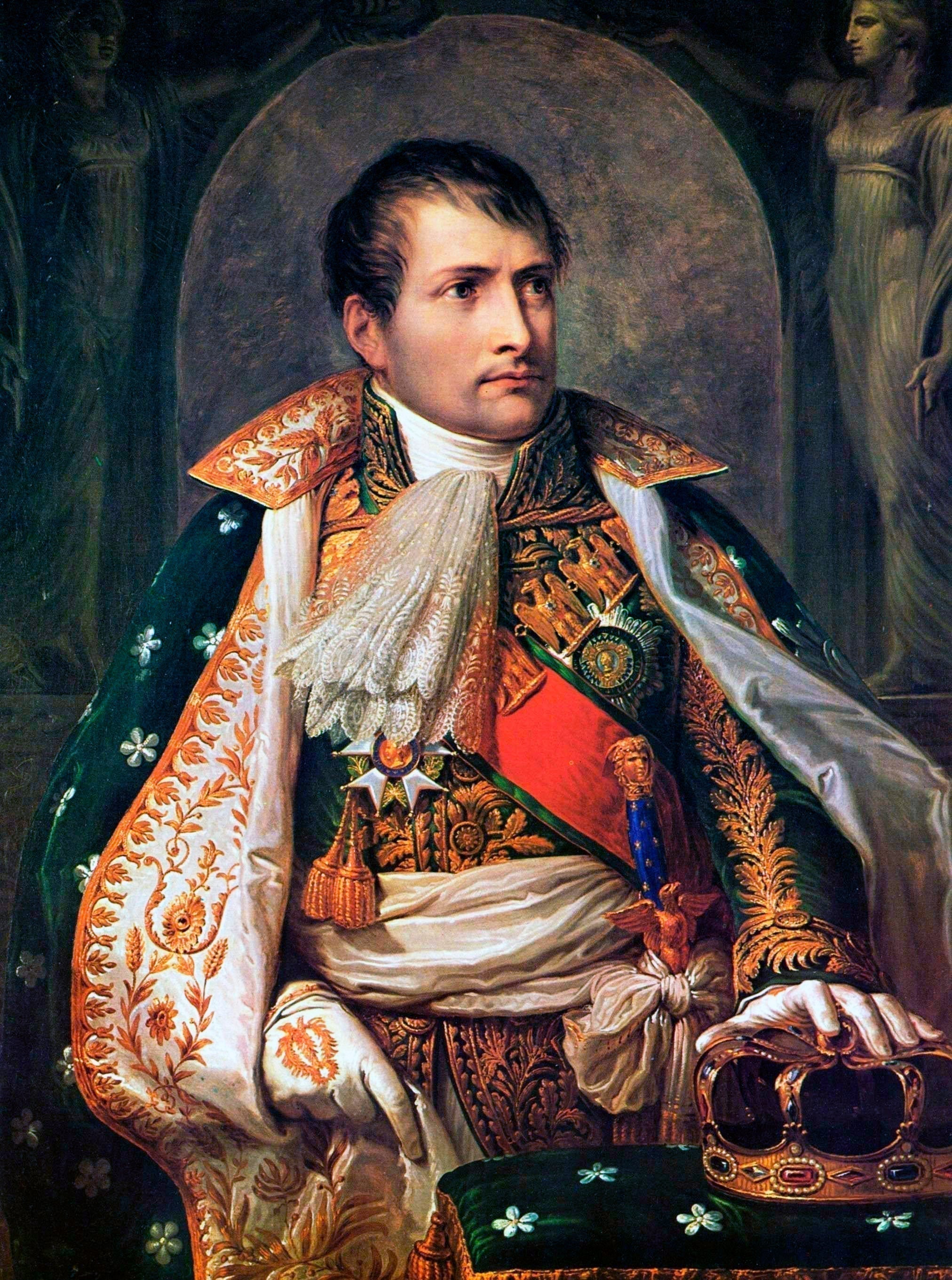
Emperor Napoleon Bonaparte’s Iconic Jewelry: Power, Love & Legacy
Napoleon Bonaparte, the man who reshaped Europe through war and politics, also understood the quiet power of jewels. Behind the cannons and crowns, his jewelry told stories of love, ambition, and legitimacy.
One of history’s most iconic figures, Napoleon is often remembered for his military genius and political reforms. Yet, there is another side to his legacy that reveals the intimate interplay between power, sentiment, and symbolism: his jewelry.
Far from being mere ornaments, Napoleon’s jewels were tools of statecraft, tokens of love, and carriers of coded messages.
Each piece—from extravagant diamond necklaces to discreet loyalty rings—offers a glimpse into how Napoleon used adornment to project authority, inspire devotion, and weave his persona into the fabric of history.

Napoleon Bonaparte - Jacques-Louis David, Public domain, via Wikimedia Commons
The Napoleon Diamond Necklace: A Masterpiece of Imperial Opulence
Among the most extraordinary jewels linked to Napoleon is the Napoleon Diamond Necklace, crafted by the prestigious Parisian firm Nitot & Sons (precursors of Chaumet) around 1811–1812.
Commissioned to celebrate the birth of his son, the King of Rome, the necklace was presented to his second wife, Empress Marie-Louise of Austria.
-
Design & Composition: The necklace contains 234 diamonds weighing approximately 263 carats in total. Its balance of large and small stones creates a cascade of brilliance emblematic of early 19th-century French craftsmanship.
-
Value: Estimated by contemporary jeweler Ernst Paltscho at 376,275 French francs, the necklace’s value exceeded the annual household budget of the Empress.
-
Scientific Analysis: Modern gemological studies conducted by the Gemological Institute of America (GIA) revealed that several stones are Type IIa diamonds, renowned for their extraordinary purity and rarity.
Today, the necklace is housed in the Smithsonian National Museum of Natural History, where it stands as one of the greatest treasures of French imperial jewelry.
Interestingly, an almost identical necklace—a Georgian diamond rivière dating to circa 1820—mirrors its style, suggesting that such lavish diamond compositions were considered the ultimate expression of elite social status during the Napoleonic era.
Coronation Regalia: Symbols of Authority
When Napoleon crowned himself Emperor in 1804 at Notre-Dame Cathedral in Paris, the regalia he commissioned served as political theater on the grandest scale. Since the French Crown Jewels had been destroyed during the Revolution, he needed new symbols of legitimacy.
-
The Crown of Charlemagne: A gilded silver crown set with ancient cameos, designed to evoke continuity with medieval emperors.
-
The Scepter: Crafted in gold, symbolizing monarchical authority.
-
The Hand of Justice: An orb topped by an open palm, signifying divine right and impartiality.
-
The Sword: Encrusted with diamonds, blending military power with royal grandeur.
Each piece of regalia was more than decorative—it reinforced Napoleon’s political narrative of being the rightful heir to both Roman and Carolingian traditions. Through this jewelry and regalia, he inscribed his reign into centuries of European monarchical heritage.
Napoleon’s Gifts and Their Political Purpose
Beyond crowns and regalia, Napoleon also understood the subtle art of gifting jewelry as a tool of statecraft. Lavish jewels and precious objects often served as diplomatic currency, designed to secure loyalty, reward service, or soften the resistance of rivals.
One of his preferred diplomatic tokens was the gold snuffbox, often decorated with enamel portraits of the Emperor and set with diamonds. These boxes were distributed to generals, ministers, and foreign dignitaries, turning personal gifts into lasting reminders of imperial authority.
He also commissioned diamond-studded swords, medallions, and insignia, presented to military officers as marks of valor and allegiance. Each gift reinforced a hierarchy of loyalty, binding recipients not only to Napoleon’s court but also to the image of the Empire itself.
Such gifts were not mere displays of wealth—they were calculated instruments of persuasion. By offering jewels that combined artistry with imperial symbolism, Napoleon extended his influence far beyond the battlefield. In many cases, these objects survived long after treaties and regimes had shifted, continuing to testify to his ability to wield adornment as a form of political power.
Personal Jewelry and Political Symbolism
Beyond public regalia, Napoleon wielded jewelry as subtle instruments of politics.
Loyalty Rings
After his abdication, supporters of the Napoleonic cause (the Bonapartists) often wore discreet loyalty rings featuring Napoleon’s image, initials, or regimental insignia. These rings allowed them to express allegiance even under regimes hostile to Bonapartist ideals.
The Talisman Jewel
Perhaps the most mysterious of Napoleon’s personal pieces was his talisman jewel, encrusted with 114 precious stones arranged in symbolic patterns.
-
Stones included rubies, peridots, and quartz, configured in designs inspired by Egyptian mysticism and tarot symbolism.
- Although several accounts describe this jewel, its authenticity remains disputed, which only enhances the aura of myth surrounding it.
-
It reflected both Napoleon’s romantic devotion to Joséphine and his fascination with ancient esoteric traditions, a reminder of his Egyptian campaign and enduring attraction to symbolism.
These pieces illustrate how Napoleon saw jewelry as a medium not only of beauty but of coded political and personal expression.

Portrait of Joséphine - François Gérard, Public domain, via Wikimedia Commons
The Engagement Ring to Joséphine: Modesty Before Grandeur
Before the crown jewels and diamond necklaces, Napoleon expressed his rising ambition through a deeply personal jewel: his engagement ring to Joséphine de Beauharnais.
-
The design followed the classic “toi et moi” (you and me) style, popular in the 18th century.
-
It featured two pear-shaped stones—a blue sapphire and a diamond—each just under one carat.
-
Though modest in size compared to his later commissions, the symbolism was profound: two stones joined together as a metaphor for the bond between Napoleon and Joséphine.
This ring remained one of Joséphine’s most cherished possessions and represents a more intimate, emotional side of Napoleon’s otherwise grandiose jewelry legacy.
Academic and Historical Insights
Historians and gemologists continue to study Napoleon’s jewelry as artifacts of cultural and political history:
-
Gemological Research: GIA analysis of the Napoleon Diamond Necklace highlights not only its artistic craftsmanship but also its extraordinary materials.
-
Historical Studies: From the Napoleonic Historical Society to contemporary scholarship, rings and personal jewels are analyzed as instruments of political allegiance.
-
Art History: Regalia such as the Crown of Charlemagne illustrate the deliberate creation of symbols linking Napoleon to ancient imperial traditions.
These studies confirm that Napoleon’s jewelry was not ornamental luxury alone—it was an extension of his political strategy and personal mythology.
Why Napoleon’s Jewelry Still Matters
Two centuries later, Napoleon’s jewels continue to fascinate for several reasons:
-
Historical Significance – They reveal how jewelry functioned as a language of power, love, and loyalty in the early 19th century.
-
Artistic Value – Crafted by master artisans such as Nitot & Sons, the pieces stand as timeless examples of French haute joaillerie.
-
Cultural Legacy – Whether displayed in museums or studied in academic works, these jewels connect us to a pivotal era of European history.
In a world where jewelry often serves as a status symbol, Napoleon’s collection reminds us that adornments can also be tools of narrative—shaping empires, securing loyalty, and carrying the most intimate emotions of their owner.
Anecdotes and Hidden Stories Behind Napoleon’s Jewelry
Beyond the documented history of imperial regalia and personal adornments, several anecdotes shed light on Napoleon’s intimate relationship with jewelry. These stories reveal not only his imperial ambitions but also the emotional layers behind certain jewels:
-
The Engagement Ring Revisited: When Napoleon’s toi et moi sapphire-and-diamond ring for Joséphine resurfaced at auction in 2013, it sold for nearly one million dollars—despite its modest size. The sale proved how historical resonance can outweigh material value.
-
The Talisman of 114 Stones: Some accounts describe a mysterious jewel encrusted with 114 gems arranged in symbolic patterns, said to reflect Napoleon’s devotion to Joséphine, his military triumphs, and even Egyptian mystical influences. Though its full authenticity remains debated, it captures the aura of superstition and symbolism surrounding his rule.
-
Jewels as Emotional Bridges: Historians suggest that the extravagant diamond necklace given to Marie-Louise in 1811 was not only a celebration of dynastic succession but also a symbolic gesture to offset Napoleon’s lingering attachment to Joséphine.
These anecdotes enrich the narrative of Napoleon’s jewels, showing that they were never mere ornaments but living symbols of love, ambition, loyalty, and mythmaking.
The Legacy of Napoleon’s Jewels
From the glittering brilliance of the Napoleon Diamond Necklace to the humble intimacy of his toi et moi engagement ring, Napoleon Bonaparte’s jewelry tells a story that transcends fashion. These pieces embody power, politics, and passion, fusing personal sentiment with imperial symbolism.
To study Napoleon’s jewelry is to understand not only the emperor himself but also the culture of an age where diamonds, gold, and symbols were wielded as instruments of history.
Today, preserved in museums and celebrated in scholarship, they continue to sparkle—not just as gems, but as enduring emblems of ambition and legacy.
FAQ
Where is Napoleon’s Diamond Necklace today?
The Napoleon Diamond Necklace, created by Nitot & Sons in 1811–1812, is preserved at the Smithsonian National Museum of Natural History in Washington, D.C.
What was Napoleon’s engagement ring to Joséphine like?
Napoleon gave Joséphine a “toi et moi” engagement ring featuring a pear-shaped diamond and sapphire, symbolizing unity. Despite its modest size, it sold at auction in 2013 for nearly one million dollars.
Did Napoleon use jewelry for political purposes?
Yes. Beyond regalia, Napoleon gifted diamond snuffboxes, swords, and medallions to generals and dignitaries, using jewelry as a diplomatic tool to secure loyalty and influence.
Why is Napoleon’s jewelry still significant today?
His jewels represent more than luxury—they reflect power, love, politics, and symbolism. Many pieces survive in museums and collections, offering insights into his persona and the culture of the Napoleonic era.
Did Napoleon design his own jewelry?
While Napoleon commissioned many jewels, he did not design them personally. He relied on leading Parisian jewelers such as Nitot & Sons (later Chaumet) to execute pieces that matched his political vision and imperial image.
What happened to Napoleon’s Crown Jewels?
Many of the French Crown Jewels were destroyed during the Revolution (1789–1799). Napoleon replaced them with newly commissioned regalia, such as the “Crown of Charlemagne,” to assert his legitimacy as Emperor.
Are there surviving jewels connected to Josephine?
Yes. Empress Joséphine retained many of her jewels after their divorce, and several pieces—including the famous sapphire-and-diamond engagement ring—still exist in private collections or museums today.
How much are Napoleon’s jewels worth today?
Their historical value far exceeds their material worth. For example, Joséphine’s engagement ring, though modest in size, sold at auction in 2013 for nearly $1 million, proving that provenance often outweighs carat size.
Why are Napoleon’s jewels important to historians?
They provide insight into his political strategies, personal relationships, and use of symbolism. Historians analyze them not only as decorative art but as instruments of power and storytelling.
Bibliography
-
Gaillou, Eloïse. An Examination of the Napoleon Diamond Necklace. Gemological Institute of America (GIA), 2007.
-
Mobley, Grant. The Historic Napoleon Diamond Necklace and Its Rare Twin. Natural Diamonds, 2025.
-
Coronation of Napoleon and Crown of Napoleon. Wikipedia; Britannica.
-
Art & Object. “How Napoleon Used Jewelry to Secure His Empire,” 2023.
-
Jensen, Randy. Napoleon’s Talisman. Napoleon Series, 2020.
-
Napoleonic Historical Society. Joséphine’s Jewels: Fit for an Empress, 2016.
-
Becker, Various Authors. Studies on Napoleonic Loyalty Rings.
Cover photo: Napoleon I of France - Andrea Appiani, Public domain, via Wikimedia Commons
